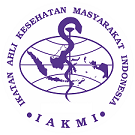Parental Insight and Action: Exploring the Link Between Knowledge and Early Childhood Dental Caries Prevention in Sukoharjo, Central Java, Indonesia
DOI:
https://doi.org/10.26911/thejmch.2025.01.01.06Abstract
Background: The most common case of dental and oral diseases suffered by early childhood is dental caries, dental caries can be prevented, one of which is by modifying the thoughts, lifestyle, and daily habits of the parents. One of the models that can be used to change dental caries prevention behavior is by using the Health Belief Model (HBM). The purpose of this study is to identify factors such as vulnerability perception, seriousness perception, benefit perception, obstacle perception, motivation to act and parental self-efficacy towards dental caries prevention behavior in early childhood in Sukoharjo Regency.
Subject and Method: This study was conducted using a quantitative approach with an analytical observational research method with a cross-sectional research design. The sample amounted to 111 parents from children aged 6 to 8 years in Weru District, Sukoharjo Regency with the Multistage Cluster Random Sampling technique. This study uses primary data sources with data collection techniques through questionnaires and then multivariate analysis with multiple linear regression methods. The content of the questionnaire includes behavior to prevent dental caries in children based on parental perception and parental knowledge about dental caries prevention based on the Health Belief Model (HBM) construct.
Results: There was a positive association of vulnerability perception (b=0.16; CI 95%= 0.01 to 0.17; p=0.024), perception of seriousness (b=0.16; CI 95%= 0.01 to 0.19; p=0.050), perception of benefits (b=0.173; CI 95%= 0.005 to 0.21; p=0.040), action signal (b=0.21; CI 95%= 0.01 to 0.27; p=0.036), and self-efficacy (b=0.19; CI 95%= 0.01 to 0.21; p=0.037) on the behavior of preventing dental caries in children, and there was a negative relationship between the perception of obstacles (b=0.15; CI 95%= 0.01 to 0.13; p=0.047) on the behavior of preventing dental caries in children.
Conclusion: Perception of vulnerability, perception of seriousness, perception of benefit, action cues, and parental self-efficacy have a positive effect on dental caries prevention behavior in children. On the other hand, the perception of obstacles from parents has a negative effect on dental caries prevention behavior in children.
Keywords:
Health Belief Model, dental caries, parental knowledge, , caries prevention behaviorHow to Cite
References
Abreu MHNG, Cruz AJS, Borges-Oliveira AC, Mattos CM (2021). Perspective on Social and Environmental Determinants of Oral Health. Int J Environ Public Health. 18(2): 3–15.
Afiati R, Rosihan A, Karina R, Sherli D (2017). Hubungan Perilaku Ibu Tentang Pemeliharaan Kesehatan Gigi dan Mulut Terhadap Status Karies Gigi Anak Banjarmasin. Dentino J. Ked. Gigi. 2(1): 56-62. http://doi.org/10.20527/dentino.v2i1.2601.g2259
Ashoori F, Karimi M, Mokarami H & Seif M. 2020. Using Health Belief Model to Predict Oral Health Behaviors in Girl Students: A Structural Equation Modeling. Pediatr Dental J. 30(1): 24–32. https://doi.org/10.1016/j.pdj.2019.12.001
Attamimy HB, Qomaruddin MB (2018). Aplikasi Health Belief Model Pada Perilaku Pencegahan Demam Berdarah Dengue. Jurnal Promkes, 5(2): 245-453. https://doi.org/10.20473/jpk.V5.I2.2017.245255
Cianetti S, Lombardo G, Lupatelli E, Rossi G, Abraha I, Pagano S, Paglia L (2017). Dental caries, parents educational level, family income and dental service attendance among children in Italy. Eur. J Paediatr Dent. 18 (01): 15-18. https://doi.org/10.23804/ejpd.2017.18.01.03
Feriyan A, Ifroh RH (2020). Efekvitas Audio-Visual Dangers of Smoking dalam Meningkatkan Pengetahuan, Efikasi Diri dan Sikap Remaja di SMP Negeri 32 Kota Samarinda. Perilaku dan Promosi Kesehatan. 2(2). https://doi.org/10.47034/ppk.v2i2.4182
Glanz K, Rimer BK, Viswanath K. 2015. Health behavior: theory, research, and practice. Fifth Edition. San Francisco: Jossey-Bass/Wiley.
Kementrian Kesehatan RI. 2018. Laporan Nasional RISKESDAS 2018. Badan Penelitian dan Pengembangan Kesehatan.
Kidd EAM, Bechal SJ. 2016. Essentials of Dental Caries. Fourth Edition. United Kingdom: Oxford University Press.
Mohammadkhah F, Ramezankhani A, Atashpoosh A, Ahmady MF, Bakhtiar M, Khani JA (2022). Effect of training based on health belief model and behavioral intention on improving dental and oral self-care behavior in 9–12-year-old Iranian female students. BMC Oral Health. 22(1). https://doi.org//10.1186/s12903022025520
Mukhbitin F (2018). Description of Dental Caries in Third Class Students of MI Al-Mutmainnah. Jurnal Promkes. 6(2): 155–166. https://doi.org//
Nassar AA, Fatani BA, Almobarak OT, Alotaibi SI, Alhazmi RA, Marghalani AA (2022). Knowledge, Attitude, and Behavior of Parents Regarding Early Childhood Caries Prevention of Preschool Children in Western Region of Saudi Arabia: A Cross Sectional Study. Arabian Dental J. 10(12): 1– 11. https://doi.org/10.3390/dj10120218
Nota A, Caruso S, Cantile T, Gatto R, Ingenito A, Tecco S, Ferrazzano GF (2019). Socioeconomic Factors and Oral Health-Related Behaviours Associated with Dental Caries in Preschool Children from Central Italy (Province of Ascoli Piceno). BioMed Res Int. 10(7): 1-7. https://doi.org//10.1155/2019/7981687
Jeihooni AK, Hidarnia A, Hossein KM (2015). The Effect of an Educational Program Based on Health Belief Model on preventing Osteoporosis in Women. Int J Prev Med. 6(1): 115-123. https://doi.org// 10.4103/20087802.170429
Setari LS, Sulistiyowati M (2017). Tindakan Pencegahan Karies Gigi Pada Siswa Sekolah Dasar Berdasarkan Teori Health Belief Model. Jurnal Promkes. 5(1): 59–66. https://doi.org/10.20473/jpk.V5.I1.2017.6576
Subaris H (2016). Promosi Kesehatan, Pemberdayaan Masyarakat, dan Modal Sosial. Yogyakarta: Nuha Medika
Sujlana A, Pannu PK (2015). Family Related Factor Associated with Caries prevalence in the Primary. J Indian Soc Pedod Prev Dent. 33(2): 83-87. https://doi.org//10.4103/09704388.155108
Tarigan R (2014). Karies Gigi. Jakarta: Penerbit Buku Kedokteran EGC.
Wilson BS, Tucci DL, Merson MH, O’Donoghue GM (2017). Global Hearing Health Care: New Findings and Perspectives. Lancet. 39(101): 2503–2515. https://doi.org//10.1016/S01406736(17)310735
Xu Y, Jia YH, Chen L, Huang WM, Yang DQ (2018). Metagenomic analysis of oral microbiome in young children aged 6–8 years living in a rural isolated Chinese province. Oral Dis J. 24(6): 1115-1125. https://doi.org//10.1111/odi.12871.










